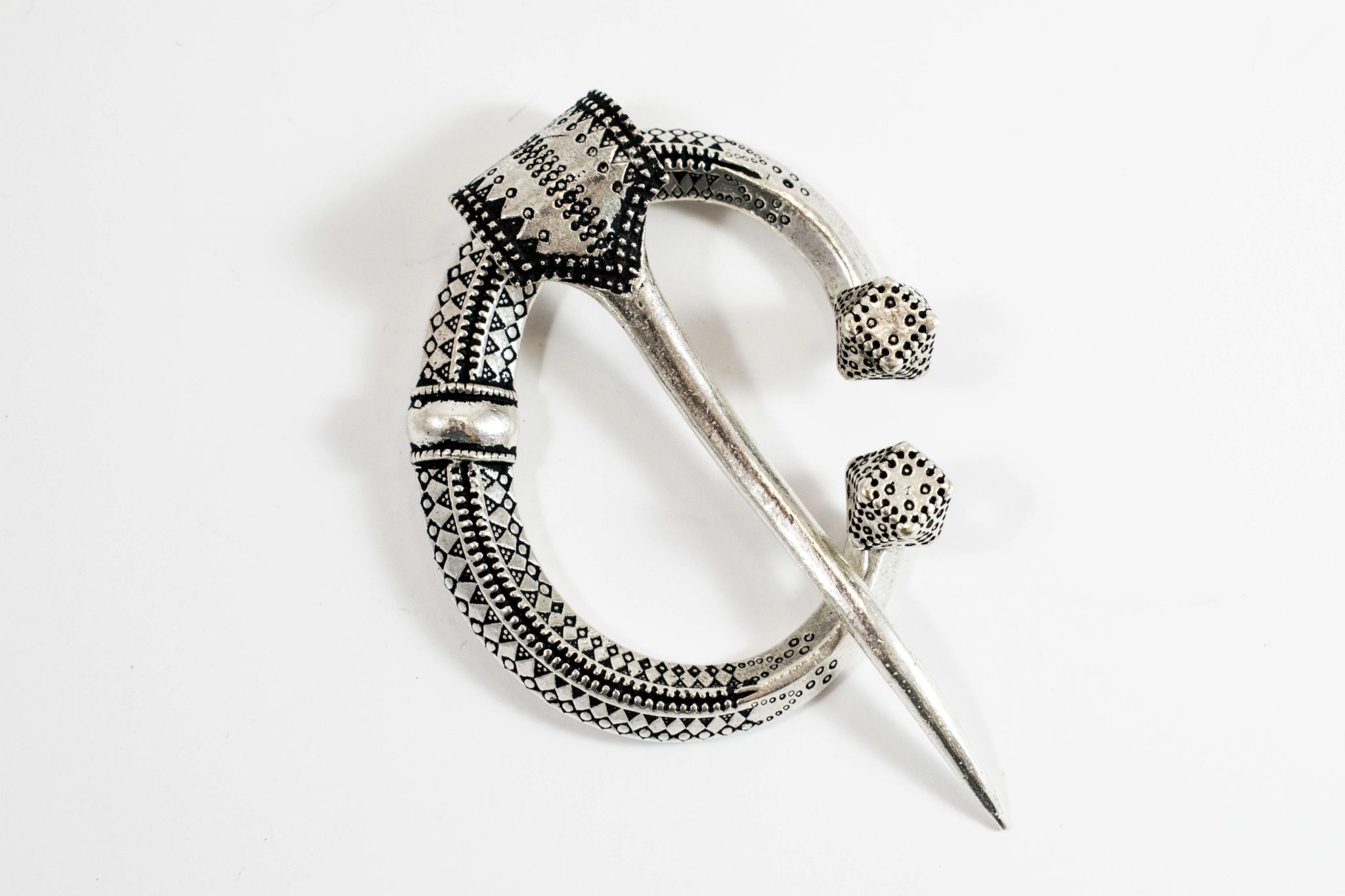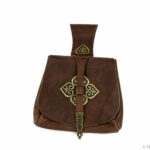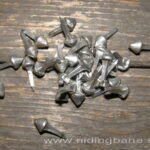Beskrivning
Vikingatida fibula efter fynd som hittats i Lilla Klintegårda på Gotland.
Orginalet finns på Historiska museet i Stockholm.
Finns i brons eller försilvrad.
The original of the penannular brooch from Klintegårda is now in the Staatens Historiska Museet in Stockholm.
Link to the historical penannular brooch…
Such a Viking penannular brooch was usually used to close the man’s cape on the right shoulder.
You can buy the polyhedron brooch from Lilla Klintegårda in bronze or in real silver-plated.
Diameter: 7 x 5.5 x 1.5 cm. Needle length: 9.5 cm
This type of ring brooch is called a polyhedron brooch because of the polygonal, bevelled ends at the ends of the brooch. The polygonal ends of these brooches are very typical for the Eastern Scandinavian region and go back to Arabic weights of Viking chariots, which were identically shaped and decorated.
The polyhedron brooch was widespread in the Viking Age, mainly in the Baltic region between the 9th and 11th centuries. Such horseshoe brooches are known from various sites, such as Papinsaari in Finland, Vindelgransele in Sweden, Haithabu in Germany and Ladoga Lake in Russia.
Such a ring brooch is also called a brooch with cubooctaedic or faceted end knobs. Possibly this typical design in the form of cradle weights was originally intended as an expression of the wearer’s identification with his trade as a merchant or the merchant’s guild.
Viking brooches with cubooctahedral ends were, however, very widespread. About 40% of all ring brooches found between 800 and 1000 AD belong to this type, so that the brooch with faceted end knobs was probably a well-known and generally freely usable form rather than being reserved for an elite merchant community.





